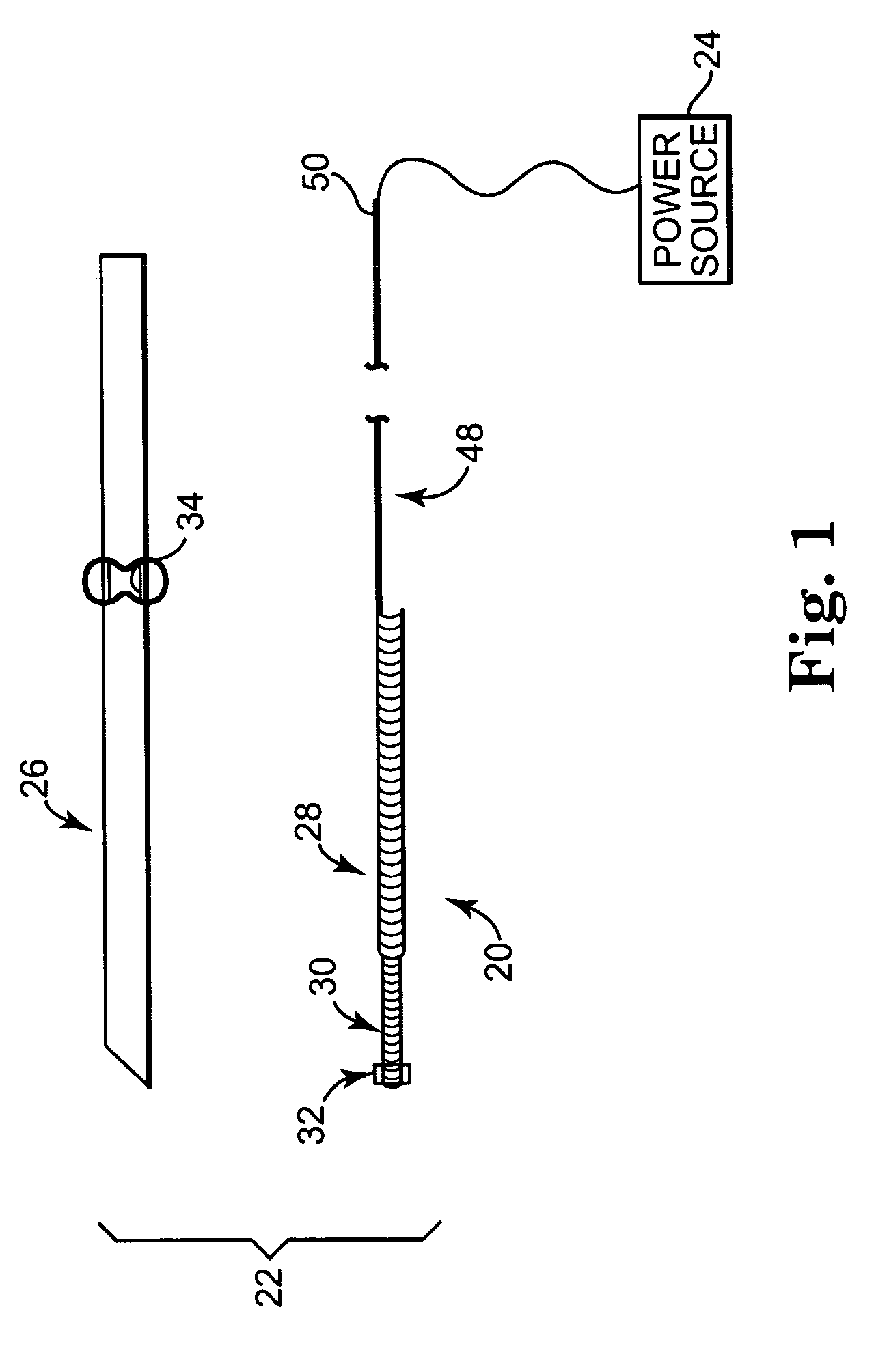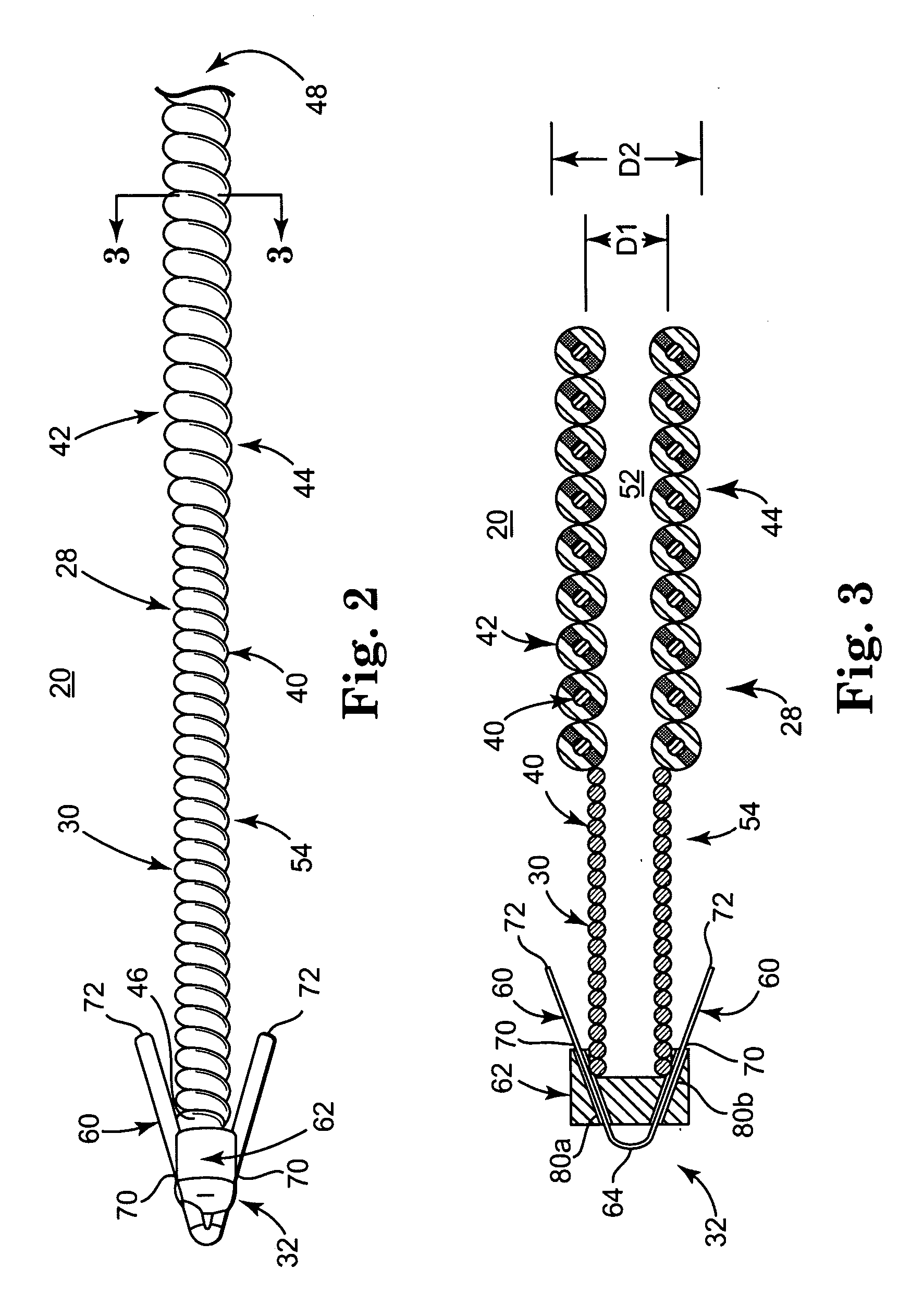Implantable medical electrical stimulation lead with distal fixation and method
a technology of medical electrical stimulation and implantable leads, which is applied in the field of system and method, can solve the problems of poor stimulation, low success rate of surgical procedures, and high likelihood of electrode dislocation, and achieves the effects of improving the safety and stability of patients, and improving the safety of patients
- Summary
- Abstract
- Description
- Claims
- Application Information
AI Technical Summary
Benefits of technology
Problems solved by technology
Method used
Image
Examples
Embodiment Construction
[0026] One embodiment of an implantable medical electrical lead 20 in accordance with principles of the present invention is shown in simplified form in FIG. 1 as part of a system 22 for delivering stimulation energy to bodily tissue of a patient (not shown) via a power source 24 (e.g., a pulse generator) maintained external the patient. The system 22 can incorporate components in addition to those illustrated, and includes the lead 20 and a needle 26. The lead 20 includes a flexible lead body 28, otherwise forming an electrode 30, and a fixation assembly 32 (shown schematically). Details on the various components are provided below. In general terms, however, the lead 20 is sized to be slidably received within a small diameter lumen 34 (referenced generally) of the needle 26 for percutaneous delivery to a stimulation site. The fixation assembly 32 defines a contracted state when disposed within the needle lumen 34, and transitions to an expanded state following deployment from the ...
PUM
 Login to View More
Login to View More Abstract
Description
Claims
Application Information
 Login to View More
Login to View More - R&D
- Intellectual Property
- Life Sciences
- Materials
- Tech Scout
- Unparalleled Data Quality
- Higher Quality Content
- 60% Fewer Hallucinations
Browse by: Latest US Patents, China's latest patents, Technical Efficacy Thesaurus, Application Domain, Technology Topic, Popular Technical Reports.
© 2025 PatSnap. All rights reserved.Legal|Privacy policy|Modern Slavery Act Transparency Statement|Sitemap|About US| Contact US: help@patsnap.com



